How to Check if Your Residential Building in the Philippines Is Earthquake Resistant
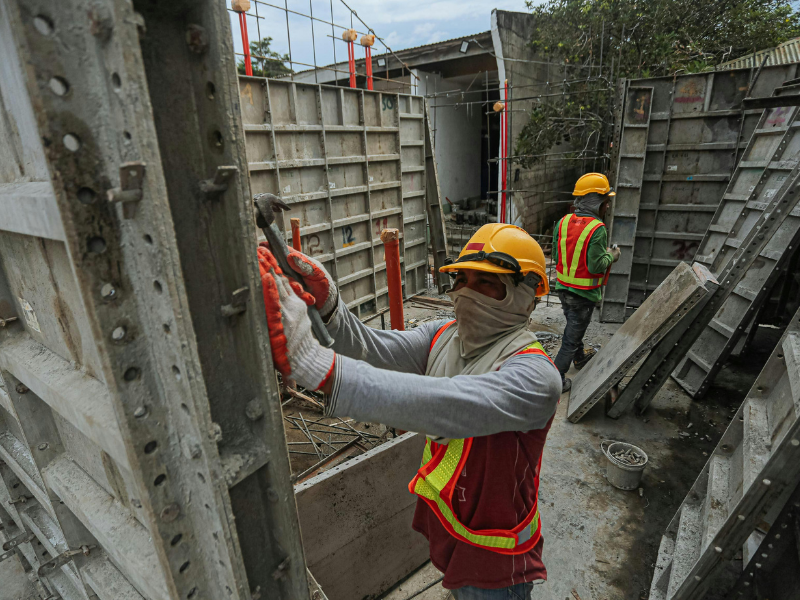
The Philippines has been shaken—literally—by several strong earthquakes in recent months. In late September 2025, a magnitude 6.9 earthquake struck off the coast of Cebu, damaging homes and displacing hundreds of residents. Just weeks later, a 7.4-magnitude quake jolted Davao Oriental, triggering tsunami warnings and structural damage across Mindanao.
These events serve as powerful reminders of our country’s vulnerability. Living along the Pacific Ring of Fire, the Philippines faces frequent seismic activity, and experts continue to warn of the possibility of the “Big One”, a large-scale earthquake that could strike Luzon in the future.
Now more than ever, ensuring your home is earthquake resistant is not just about compliance—it’s about safety, peace of mind, and preparedness.
Inspecting Your Home Quickly: Signs to Watch For
Before calling in an expert, you can perform a quick visual inspection of your home to spot early warning signs of structural weakness. While these don’t replace a professional assessment, they can help you identify issues that need immediate attention.
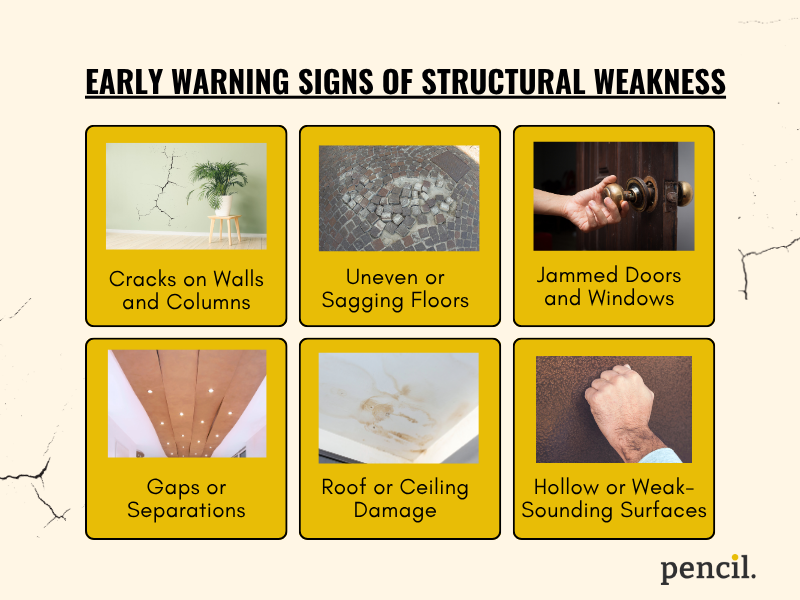
Here are warning signs and quick checks you can do (safely) to evaluate your home’s structural integrity:
1. Cracks on Walls and Columns
- Diagonal cracks near windows or doors may indicate shear stress.
- Vertical cracks on columns and beams are serious red flags.
- Wide or growing cracks signal potential structural damage.
2. Uneven or Sagging Floors
- If your floors feel tilted, bouncy, or uneven, it may mean your foundation is shifting.
- Cracked floor tiles or lifted floorboards can also hint at ground movement.
3. Jammed Doors and Windows
- Difficulty opening or closing doors and windows can mean your walls or frames have shifted.
- Look for visible gaps between door frames and walls.
4. Gaps or Separations
- Check for gaps between walls and ceilings or between walls and columns.
- Separation lines in corners may indicate foundation settlement.
5. Roof or Ceiling Damage
- Sagging beams or ceiling cracks are possible signs of weakened structural support.
- Water leaks or rust stains suggest moisture infiltration that could affect your home’s strength.
6. Hollow or Weak-Sounding Surfaces
- Tap concrete walls lightly—a hollow sound could mean delamination or voids beneath the surface.
- Combine this check with visible cracks to pinpoint areas that may need professional evaluation.
These quick checks are only preliminary. They can alert you to potential red flags, but they do not replace a comprehensive structural evaluation by a qualified engineer.
If you notice these signs, it’s time to contact a licensed structural engineer for a more detailed inspection.
Whether you’re planning to build, buy, or renovate, here’s how to check if your residential building in the Philippines can stand strong when the ground shakes.
1. Check If Your Building Follows the National Structural Code of the Philippines (NSCP)
The NSCP sets the country’s official standards for earthquake-resistant design and construction. Homes built after the 2015 code update are more likely to have proper seismic design.
- Ask for documentation — Request your building plans and permits, and verify that they were signed by a licensed structural engineer.
- For older homes — If your house was built before the 1990s, it might not meet modern seismic standards. Have it assessed for compliance and potential retrofitting.
2. Inspect the Foundation and Structural Frame
A building’s resilience starts with a solid foundation.
- Foundation: It should be stable, deep, and free from visible cracks or signs of settlement.
- Structural frame: Reinforced concrete or well-welded steel frames provide superior earthquake performance. Weak columns or poor-quality concrete can compromise safety.
3. Examine the Walls and Materials Used
Not all walls are created equal.
- Reinforced concrete walls are best for absorbing seismic energy.
- Unreinforced hollow blocks without steel bars can crumble under stress.
- Masonry and partition walls should be properly anchored to the structural frame—not just the floor or ceiling.
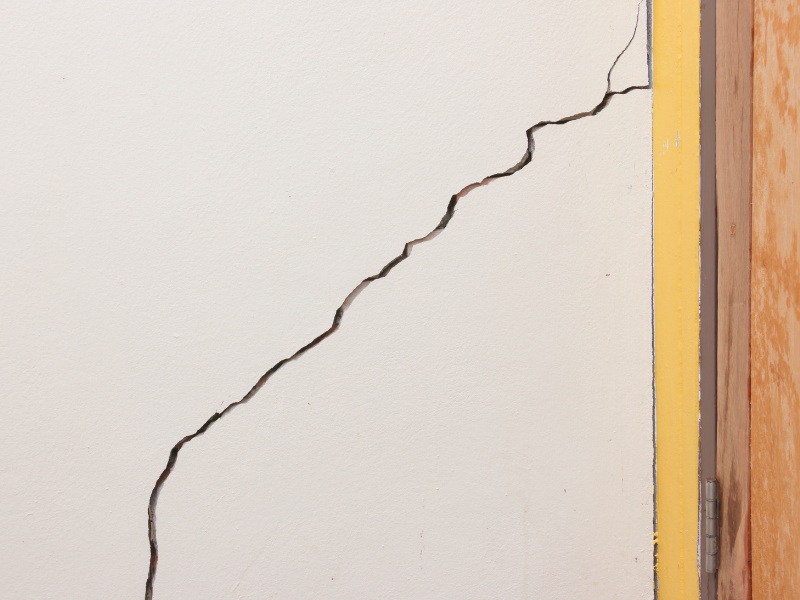
Watch out for: large diagonal cracks, hollow sounds when you tap the walls, and gaps between adjoining surfaces.
4. Review the Building’s Layout and Symmetry
The layout of your home affects how earthquake forces are distributed.
- Symmetrical designs perform better because they balance seismic loads.
- Irregular or L-shaped homes are more prone to torsional movement during a quake.
- Large open areas without load-bearing walls can make structures unstable.
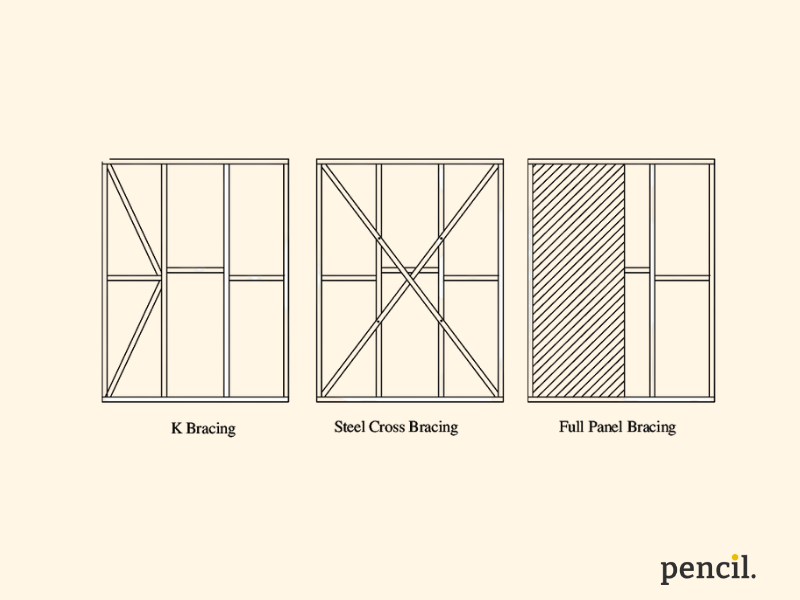
Consider adding shear walls or cross bracing if your home lacks internal supports.
5. Assess Construction Quality and Workmanship
Even with a good design, poor workmanship can make a home unsafe.
- Check if beams, columns, and rebar are properly spaced and aligned.
- Look for exposed or rusted steel bars.
- Ensure that the roof, walls, and floors are securely connected to the frame.
When buying or renovating, always ask for construction photos or inspection reports for transparency.
6. Hire a Structural Engineer for a Seismic Evaluation

A structural engineer can conduct a detailed evaluation of your home’s earthquake resistance through:
- Structural audits
- Non-destructive testing (NDT)
- Seismic vulnerability assessments
They’ll recommend whether your home meets the current NSCP standards or if it requires strengthening.
7. Consider Seismic Retrofitting
If your building isn’t up to standard, retrofitting can significantly enhance safety. This process may include:
- Adding steel bracing or shear walls
- Strengthening columns, beams, and joints
- Reinforcing foundation connections
- Installing base isolators to reduce ground vibration impact
Though it requires investment, retrofitting is far more affordable—and far less devastating—than rebuilding after an earthquake.
8. Work with Professionals Who Prioritize Safety
We believe that true architecture blends aesthetic vision with structural integrity. Our team of architects and engineers works hand in hand to create homes that are not only visually stunning but also built to stand strong against the challenges of time and nature.
With extensive experience in residential design, structural planning, and site-specific analysis, we ensure every project meets the highest safety and performance standards—especially in earthquake-prone areas of the Philippines.
From modern minimalist homes to full-scale renovations, every detail is thoughtfully designed to achieve the perfect balance of form, function, and resilience.
When you build with Pencil Design Studio, you don’t just get a beautiful home—you get one that’s intelligently designed, structurally sound, and future-ready.
A Strong Home Is the Best Preparation
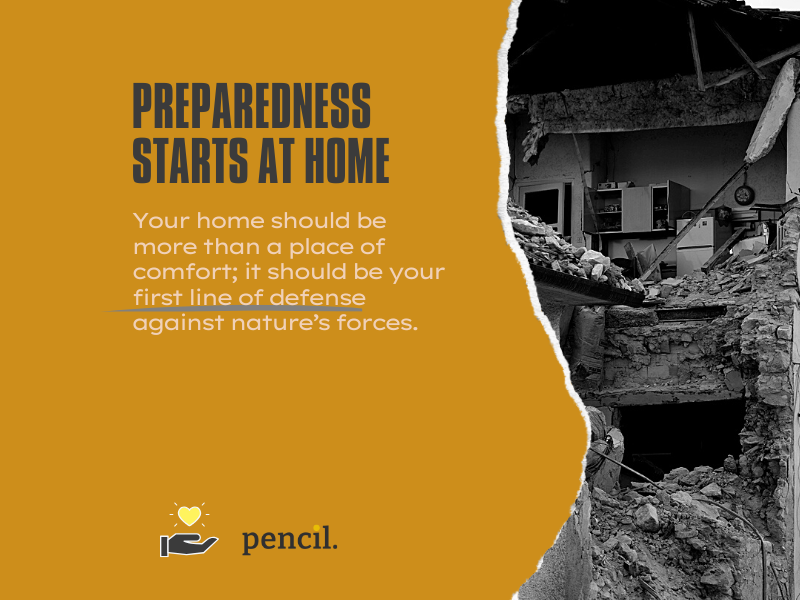
The recent earthquakes remind us that preparedness starts at home.
Your home should be more than a place of comfort—it should be your first line of defense against nature’s forces. By investing in earthquake-resistant design, you safeguard not just your property, but your family’s future.
Contact us today to discuss how we can help you design or assess your home with earthquake resilience in mind.
More Great Resources For You
More Great Resources For You
Let’s build your dream home now, shall we?
We guarantee you that we won’t rest until your dream home has come to life.


.png)

